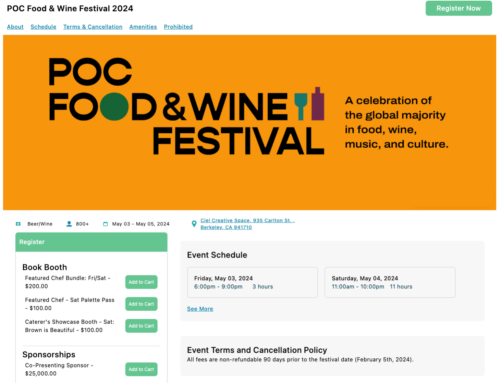When an event is going through any type of status change, communication is critical at every stage of the process. From the decision-making to the announcement, involving event stakeholders properly is crucial. In the beginning, an event management company should identify the stakeholders to be included in the decision-making process. Then the event must involve them as they assess the situation.
Learn how EventHub helps to streamline sponsor and vendor communication.
After an event management company makes the decision comes the painful process of announcing it to everyone. This part can be tricky. If not executed properly, an event management company can receive a lot of backlash from its constituents. From start to finish a status change is a delicate situation. This is why we have outlined the three key considerations you must factor in when creating an effective stakeholder communication plan.
#1 Identify Key Stakeholders
When it comes to an event status change there are two major groups of stakeholders: those involved in the decision-making process and those who must be informed once the decision is made. When discussing any major change to an event, be it a postponement, cancellation, or other material updates, the major stakeholders should be brought into the decision-making process. It cannot be made in a vacuum. Active communication with major stakeholders is key when gathering data and assessing the situation.
Before you can effectively disseminate the information you need to write down who needs to be spoken to. Start by making a list of all of those involved in the event. A good starting place is an internal team, the board of directors, and others closely involved. The local government and venue should also be included. Next think of any major sponsors, vendors, or other outside parties that may have a large investment in the event. Other groups like artists, talent bookers, volunteers, community leaders, and others involved should be listed out as well.
#2 Prioritize the Stakeholders for your Event
Once you have involved the correct stakeholders in the decision-making process and a conclusion has been made the next step is to prioritize how and when you will tell other key stakeholders. For general press and public inquiries, it’s important to have one point of contact to convey a uniform message. For other stakeholders, you want to group them into segments based on the method and timing of delivery.
By segmenting them you ensure that they receive the proper communication style based on their significance to the event. A major sponsor may receive a phone call while a volunteer may only receive an email. This varies based on your event and it’s stakeholders. These segments help you determine how to communicate. You can decide who gets a phone call, email, press release, etc. It also helps with when you should relay messages to that group. For example, you will want to notify sponsors and other key stakeholders 24 to 72 hours before your public announcement. NEVER ANNOUNCE PUBLICLY BEFORE GIVING SPONSORS AND OTHER KEY STAKEHOLDERS ADVANCED NOTICE.
#3 Communicate Early and Often
You should be communicating with stakeholders as early as possible. They should receive updates even if are still in the process of collecting data and assessing the situation. You should not communicate with them only when you have a major update. Even if the update is that there is no update, constituents appreciate you reaching out to them. This lets them know they are thought of during this time.
Notify the public early, often, and in small bites.
This makes information easier to digest and builds trust amongst stakeholders. Before a major announcement or press release, it’s important to communicate with key stakeholders ahead of time. For those most important to the event, they should find out directly from the source, not the local news or the internet.
One valuable tool to leverage when reaching out to stakeholders is the use of a video announcement. This helps to convey a deeper emotion to constituents. Below is an example that demonstrates care and concern when relaying a heavy message. It should be noted that comments were turned off and the video is unlisted but shared with key stakeholders.
Changing the status of an event is not a fun task. To ensure the correct change is made events must involve major stakeholders from the beginning to help with the decision-making process. Not properly communicating with stakeholders can take the situation from bad to worse. By keeping these key considerations in mind, you ensure your event the best possible outcome when it comes to making this tough decision and the following announcement. Not only that but by personalizing the communication by segment, your event builds trust with key stakeholders.





